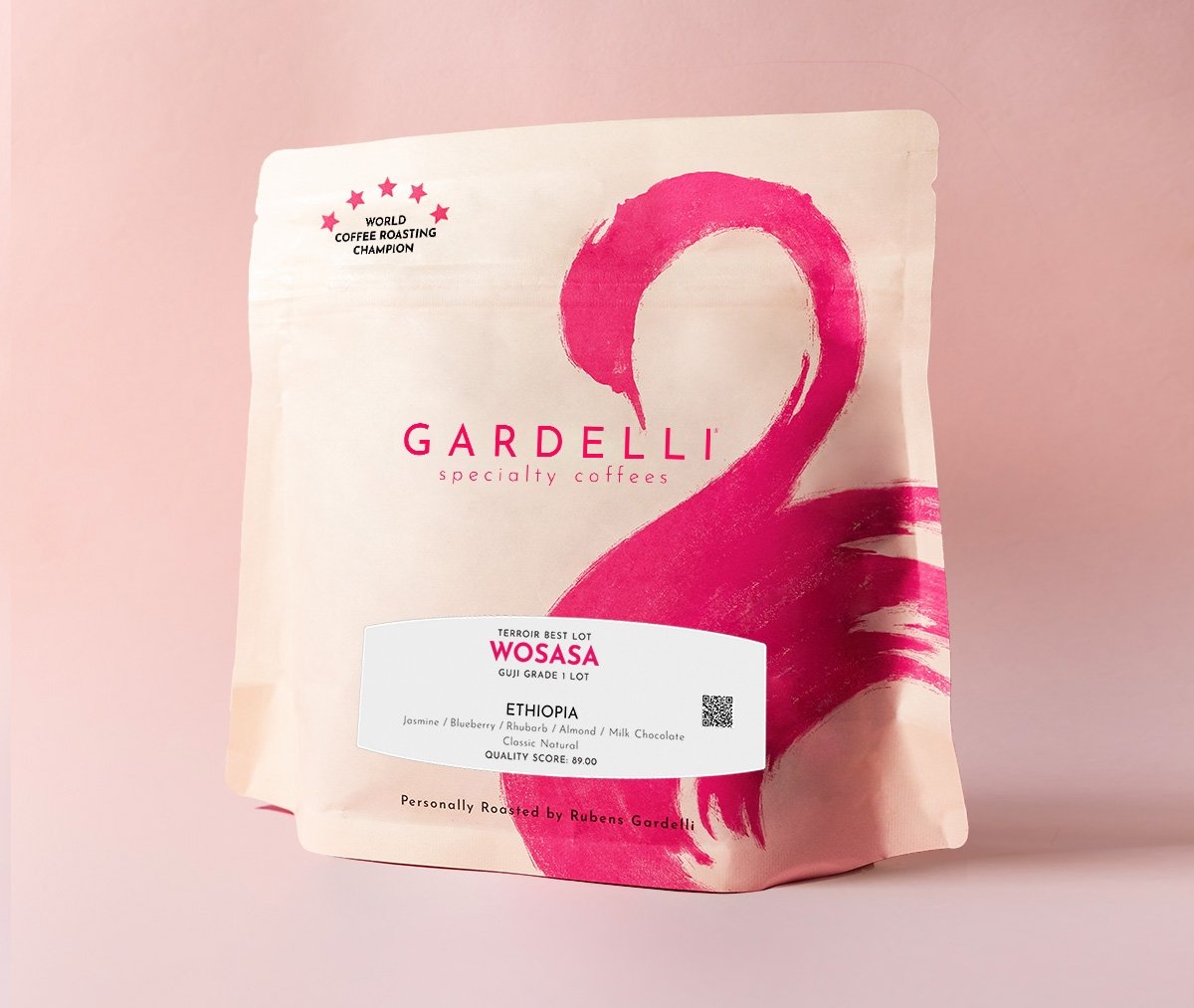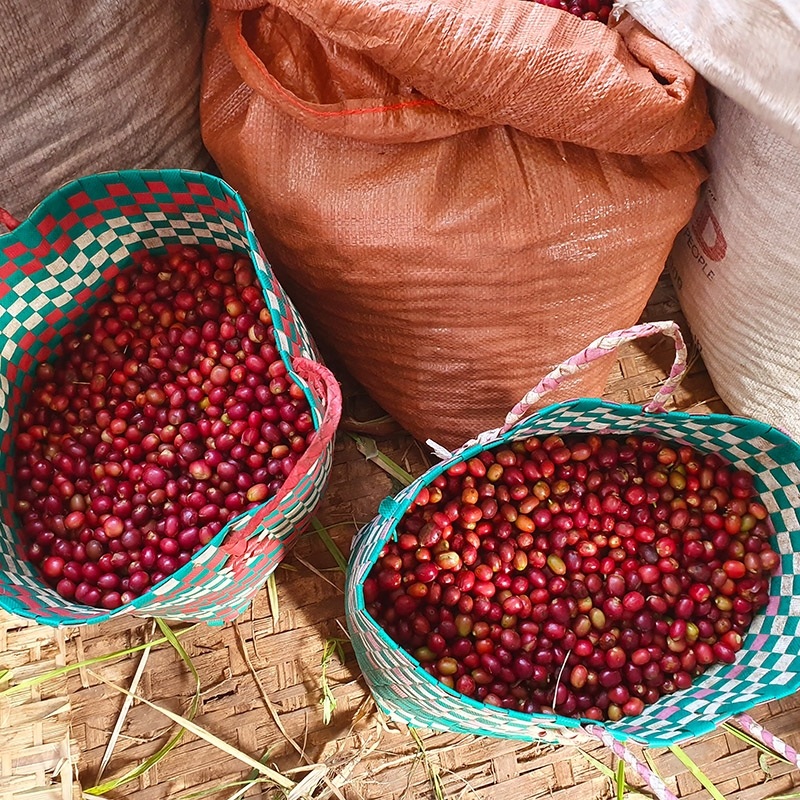




Ethiopia
Terroir Best Lot
QUALITY SCORE: 89.00
Cup Notes
Jasmine / Blueberry / Rhubarb / Almond / Milk Chocolate
Suggested for espresso and filter
when we roast
We freshly roast to order all coffees on Monday, Wednesday and Friday (excluding national holidays), and ship the same day! Cut-off time is 11:59pm (UTC+1) of the day before the roast day. *We only ship whole beans*
Wosasa is the name of a village in the area of Raro Nensebo Kebele.
The lot takes the name of the village where twenty five farmers that contributed to this lot live with their families, all of them are growing Gibirrina/Serto variety, local plants with high disease-resistant qualities.
Farmers grow their coffees under the shade of indigenous trees. The every size of a farm is 3.5 ha, and the farms are located around the Wosasa sub Kebele. The farmers, contributing to this lot, are trained in agronomy and post-harvest practices by Mr. Ture Waji, who has been nicknamed "King of Guji" for his important work with the farmers in the area.
The drying stations in the area are unique thanks to the drying beds, with which the stations are equipped. Each bed has a tag of the lot that it contains, listing the beans' origin, the date of delivery delivery and the start date of drying. The tags also show the relative moisture content readings for each day.

Ethiopian Heirloom, why the generic name? It's estimated that there are somewhere in-between six and ten thousand coffee varietals in Ethiopia. And due to this colossal figure, there hasn’t been the genetic testing to allow buyers to distinguish the varietal. With the cross pollination that naturally happens in the wild, the name ‘Ethiopian Heirloom’ exists as a catch-all phrase to describe this happenstance. However, that really makes Ethiopian quite a mystery – and an interesting mystery as each village or town could potentially have a different varietal which could carry very unique properties.

Dry process seems simple: pick the fruit, lay it out in the sun until it turns from red to brown to near-black, and then hull off the thick, dried outer layer in one step to reveal the green bean. It is a method suited to arid regions, where the sun and heat can dry the seed inside the intact fruit skin.
It's often referred to as "natural coffee" because of its simplicity, and because the fruit remains intact and undisturbed, a bit like drying grapes into raisins. Since it requires minimal investment, the dry process method is a default to create cheap commodity-grade coffee in areas that have the right climate capable of drying the fruit and seed.
But it’s a fail in humid or wet regions. If the drying isn't progressing fast enough, the fruit degrades, rots or gets covered with mould.
Dry-processed coffees can also be wildly inconsistent. If you want a cleanly-fruited, sweet, intense cup, dry process (DP) takes more hand labor than wet process. Even the most careful pickers will take green unripe or semi-ripe coffee off the branch as they pick red, ripe cherry. If these are not removed in the first days of drying, the green turns to brown that is hard to distinguish from the ripe fruit.
